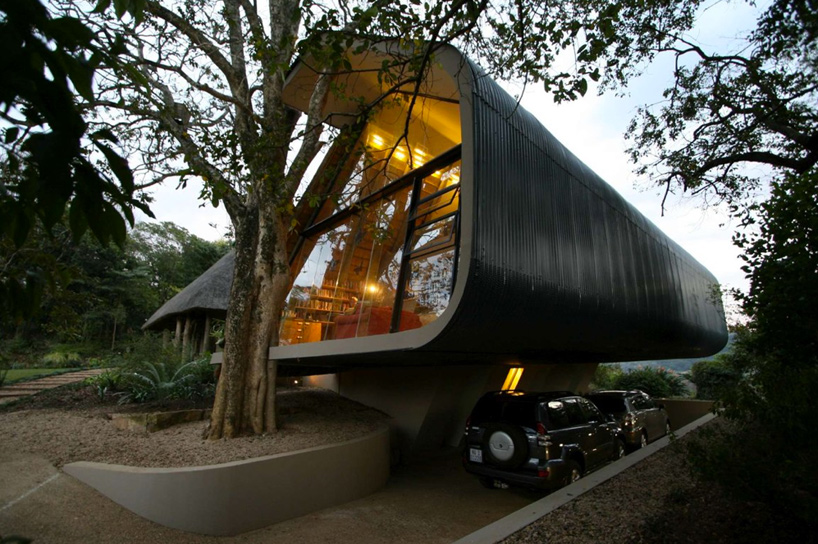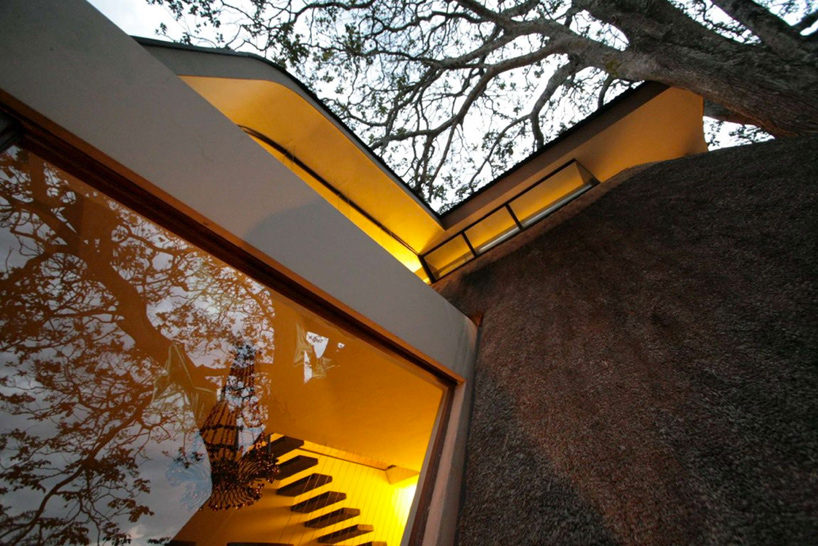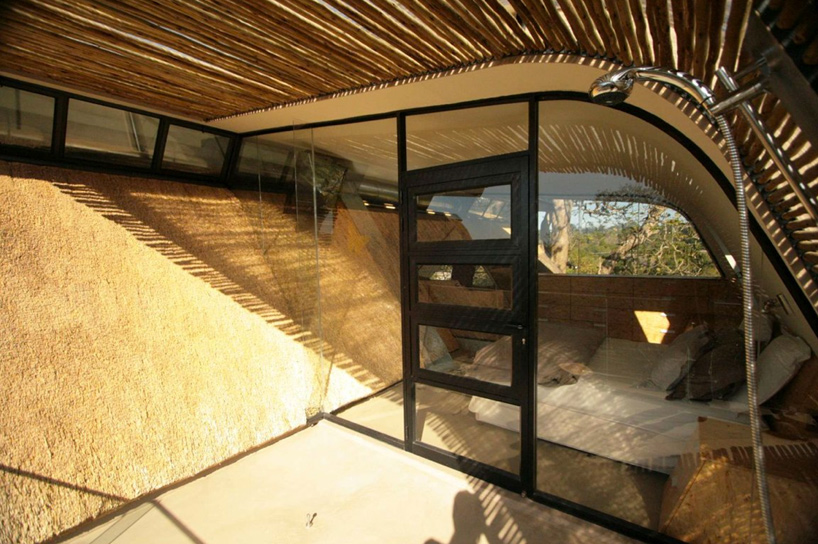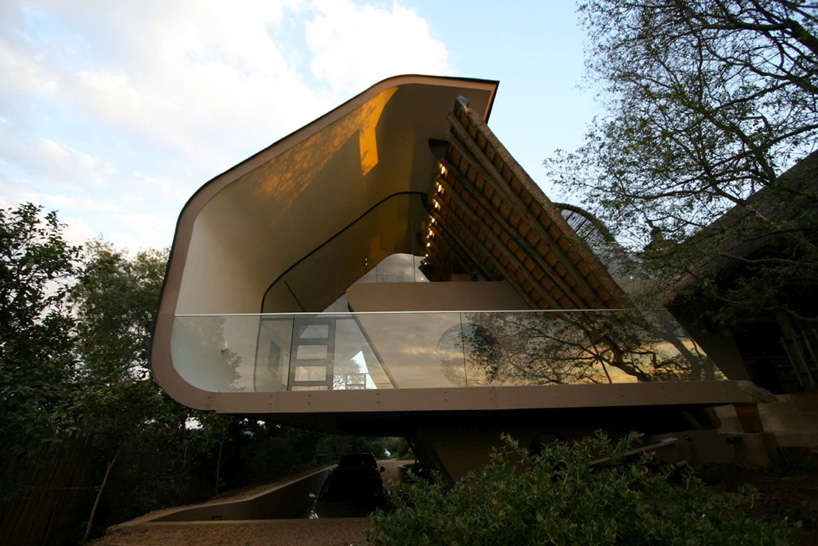Organic South African Villa Transformed
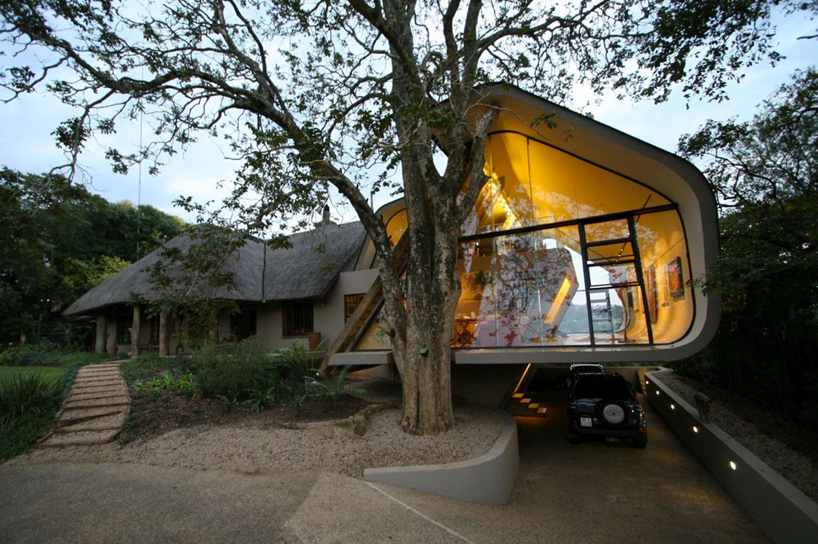
Who says modern and rustic styles can’t be blended? This elegant conversion by Elmo Swart, an architect, photographer and designer based in Cape Town, South Africa, takes traditional thatched roofing and organic shapes and contrasts them with lots of glazing and sleek minimalist interiors.
The architect began with a modest hut, which now forms the core of the renovated home. The curved addition comes a beautifully contrasting extension, reaching out into the adjacent forest environs.
Elmo Swart Architects started with a simple gesture – a single arcing steel-framed plane that wraps up the outside of the building, clad partly in permeable bamboo where it forms a lofted outdoor deck. This extension seems to embrace the more conventional part of the house from behind, one end telescoping out to gaze at the gorgeous views. Outside, it also hangs over the edge of a partly-underground driveway terminus, cantilevered to both conceal and protect cars parked outdoors below its floors.
Local materials inform and soften the stark modern shapes, from packed-earth walls and natural-wood finishes to furniture and furnishings from the old home moved into the new sections. The fluid, C-shaped house is also situated around an existing tree, adding to its organic appeal. Glass balcony edges ensure that the views aren’t interrupted, even from beds tucked into alcoves that feel more like balconies than conventional bedrooms.
Inside, the expanded floor plan includes a pair of new studies, a bedroom and a multipurpose entertainment, art gallery and gathering space. Protected from the sun yet open to the breeze, infused with daylight and delighting in its singular location, ‘Wright Conversion’ is a lovely example of incorporating vernacular architecture of a particular place into modern structures. Too often, we see homogenized architecture erase much of the character, culture and history of a city; this is how you balance a sense of rootedness with the comforts and aesthetics of a contemporary lifestyle.





